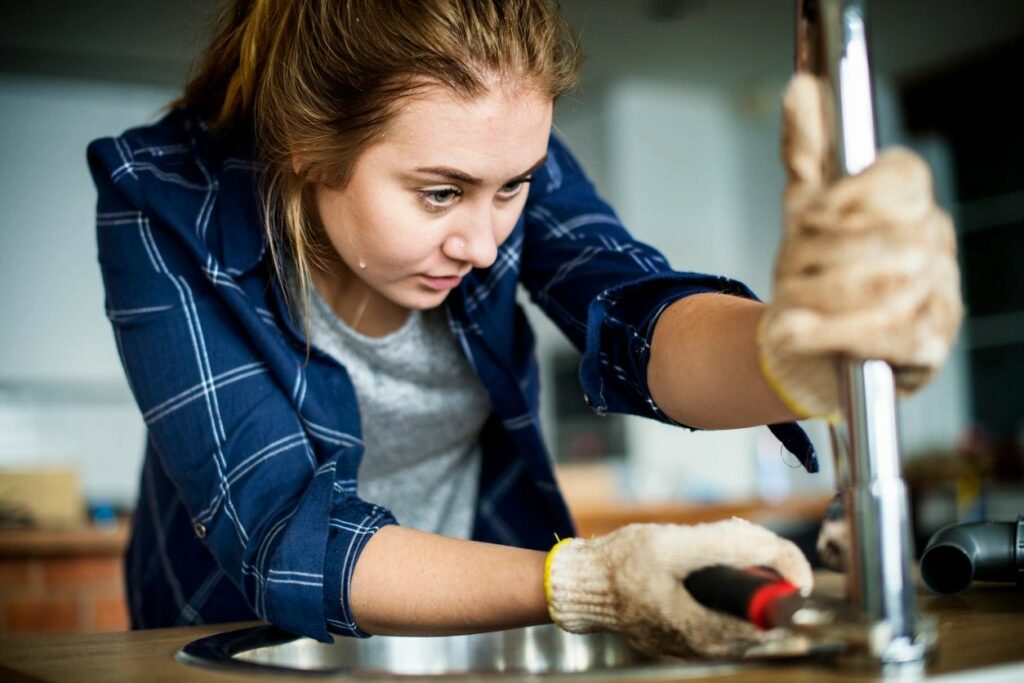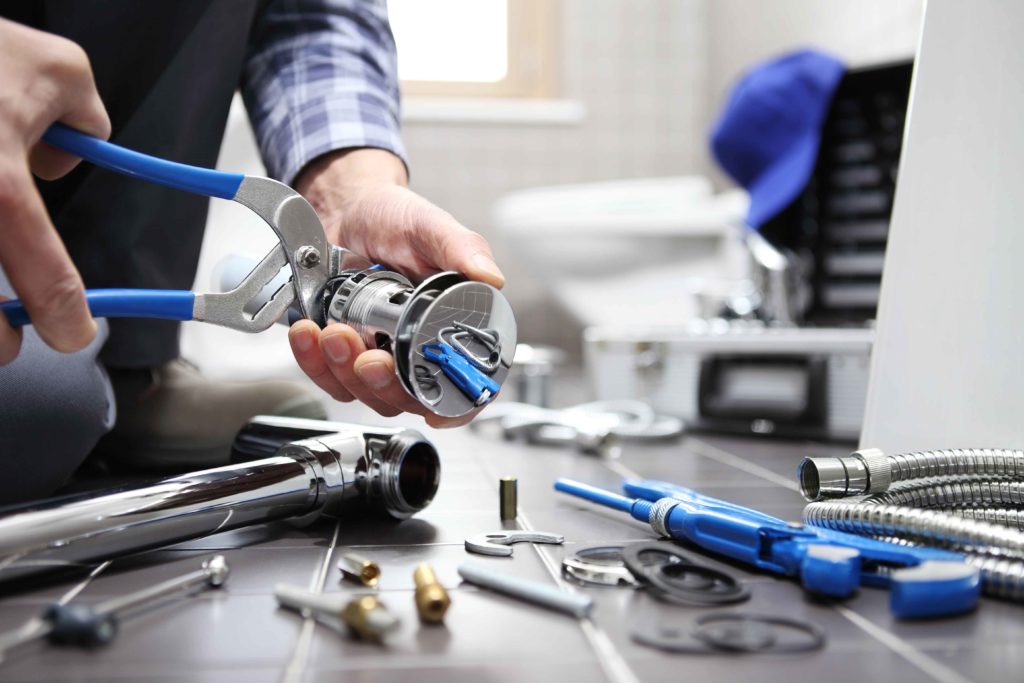We've stumbled on this post about Should I Repair or Replace a Leaky Faucet? listed below on the net and thought it made perfect sense to relate it with you over here.

Dripping taps might seem like a small hassle, however their impact goes beyond simply the nuisance of the noise. From wasting water to incurring unneeded financial costs and health risks, ignoring a trickling tap can result in various consequences. In this post, we'll delve into why it's crucial to resolve this typical household concern immediately and efficiently.
Wastefulness of Water
Environmental Influence
Leaking faucets add considerably to water wastefulness. According to the Environmental Protection Agency (EPA), a solitary faucet leaking at one drip per second can lose greater than 3,000 gallons of water per year. This not just strains water resources yet also impacts ecological communities and wildlife based on them.
Financial Prices
Increased Water Bills
Beyond the ecological impact, leaking faucets can pump up water expenses considerably. The gathered wastefulness over time translates into greater energy expenses, which can have been avoided with timely fixings.
Possible Residential Property Damages
Moreover, extended trickling can lead to damage to fixtures and surfaces bordering the tap. Water buildup can cause staining, corrosion, and even architectural issues if left unattended, resulting in additional repair work expenses.
Health and wellness Worries
Mold And Mildew and Mold Growth
The continuous existence of dampness from a dripping faucet develops an ideal atmosphere for mold and mold growth. These fungis not just compromise interior air top quality yet also present health and wellness dangers, specifically for individuals with breathing problems or allergies.
Waterborne Diseases
Stationary water in trickling faucets can become a breeding ground for germs and various other virus, increasing the risk of waterborne diseases. Contaminants such as Legionella bacteria flourish in stagnant water, potentially bring about significant ailments when consumed or breathed in.
Do it yourself vs. Expert Repair work
Advantages and disadvantages of DIY Repair Work
While some may try to take care of a leaking faucet themselves, DIY repairs feature their own set of obstacles. Without appropriate knowledge and devices, DIY attempts can aggravate the problem or lead to insufficient fixings, extending the trouble.
Benefits of Working With an Expert Plumber
Working with a professional plumber makes certain that the underlying cause of the leaking tap is dealt with successfully. Plumbing professionals have the know-how and devices to diagnose and fix tap issues efficiently, conserving time and reducing the risk of more damage.
Step-by-Step Overview to Fixing a Dripping Tap
Tools Called for
Before trying to take care of a dripping tap, collect the needed tools, consisting of an adjustable wrench, screwdrivers, replacement components (such as washing machines or cartridges), and plumber's tape.
Usual Faucet Issues and Their Solutions
Recognize the type of tap and the details problem causing the drip. Typical problems consist of damaged washers, corroded shutoff seats, or damaged O-rings. Refer to producer instructions or on the internet tutorials for detailed advice on repairs.
Preventive Measures
Routine Upkeep Tips
To stop trickling taps, perform routine maintenance such as cleaning aerators, examining for leaks, and changing damaged components promptly. Additionally, consider installing water-saving tools or updating to extra reliable components.
Value of Prompt Repair Works
Dealing with dripping taps as quickly as they're seen stops additional water wastage and possible damages, ultimately conserving both water and cash in the long run.
Influence On Residential Or Commercial Property Worth
Understanding of Well-Maintained Residential Or Commercial Property
Keeping a residential or commercial property in good condition, consisting of dealing with upkeep issues like leaking faucets, improves its regarded value and charm amongst potential customers or tenants.
Influence on Resale Worth
Residences with well-maintained plumbing fixtures, consisting of taps, command greater resale values in the realty market. Attending to trickling taps can contribute to a positive perception during property evaluations and settlements.
Environmental Obligation
Private Payment to Preservation
Taking obligation for taking care of leaking faucets lines up with wider efforts toward water conservation and environmental sustainability. Every person's activities jointly make a considerable impact on maintaining precious sources.
Lasting Living Practices
By prioritizing timely repair services and taking on water-saving practices, individuals contribute to sustainable living practices that profit both existing and future generations.
Final thought
Attending to a leaking faucet goes beyond plain comfort; it's a necessary step towards saving water, lowering economic prices, and safeguarding wellness and property. Whether with do it yourself repairs or professional aid, doing something about it to repair leaking faucets is a little yet impactful means to promote liable stewardship of resources and add to a much healthier, much more lasting future.
Most Common Reasons for a Leaky Faucet and How to Stop the Drip
Whether it’s your kitchen faucet leaking or a bathroom faucet leaking, one leaky faucet can waste anywhere from three to 30 gallons of water every single day. If the constant drip-drip-drip doesn’t get your attention, your water bill will. The good news is that, by following a few simple steps, chances are pretty good you can fix the problem yourself.
Why is it dripping?
Before you start taking things apart, let’s break down some of the most common causes of a leaky faucet.
Bad O-ring.
A cartridge is a valve that controls the flow of water into the faucet spout. On cartridge faucets there’s an O-ring—the little disc attached to the stem screw that holds the faucet handle in place. If it’s loose or worn-out, it can cause your sink handle to leak. Of course, the cartridge itself could be worn out. If that’s the case, make sure you replace it with the exact same kind.
Corroded valve seat.
The valve seat connects the faucet and the spout. If the leak seems to be coming from the spout, it might be because a buildup of water sediment has corroded the valve seat.
Worn-out washers or seals.
A leaky spout could be caused by a bad washer that rests against the valve seat. It’s just a matter of time before friction takes its toll. It could also be the wrong size washer or one that’s been installed incorrectly. Water sediments can also corrode inlet and outlet seals.
Water pressure.
If the faucet only drips now and then, or when you turn the handles a certain way, you should probably check your home’s water pressure.
Loose or broken parts.
The adjusting ring and packing nuts in the stream screw can become loose over time, causing your sink handle to leak. Try tightening or replacing the packing nut. If the leak is coming from the pipes underneath the sink, you probably have a broken pipe or fitting. If that’s the case, you should definitely call a plumber.
Know your faucet.
Faucets come in a variety of types. Each one has its own assembly—and its own possible causes of leaks. Learning about the four most common kinds of faucets will help you know how to take them apart and make any repairs.
How to stop a leaky faucet
Fixing that leaky faucet doesn’t have to take a lot of time, money, or expertise. It’s usually a simple matter of replacing a worn-out washer or gasket, a loose O ring, or another part. Chances are really good you can do this yourself if you follow these simple steps.
Shut off the water.
Before you tackle the faucet, cut off the water supply to the sink. There should be one valve for hot and one for cold. Hand-turn them clockwise with your hands till they close. If there are no valves under the sink, head to the basement and shut off the main water supply to the house. Then turn on the faucet until it empties out the water that’s still in the line and you’re ready to start. It’s a good idea to cover the sink drain with a plug or a rag so you don’t lose any small pieces and parts while you’re working.

We hope you enjoyed our post about Why It's Important to Fix Leaky Faucets. Thanks so much for finding the time to read our content. Appreciated our entry? Please share it. Let another person discover it. We truly appreciate your readership.